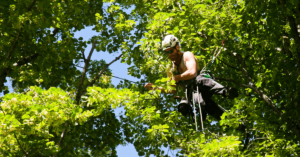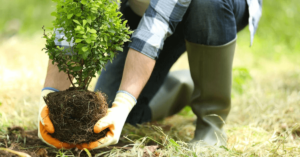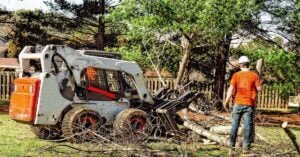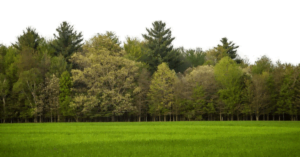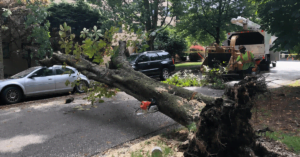Newtown, Connecticut, is known for its lush greenery and tree-lined streets that add to the town’s natural beauty. However, not all trees are suitable for planting in Newtown’s environment.
In fact, some trees can cause significant damage to homes, roads, and other infrastructure due to their invasive roots or weak branches. Knowing which trees to avoid planting in Newtown is essential for maintaining a safe and healthy environment.
In this topic, we will discuss the trees that homeowners, landscapers, and local authorities should avoid planting in Newtown, Connecticut. We will explore the reasons behind these recommendations and suggest alternative trees that are better suited to the area’s climate and soil conditions.
Trees to Avoid Planting in Newtown Connecticut
Here are some trees that should be avoided from planting in Newtown, Connecticut.
1) Norway Maple (Acer platanoides)
Norway Maple (Acer platanoides) should be avoided to plant in Newtown Connecticut. The Norway Maple is an invasive species in the northeastern United States, including Connecticut. It has aggressive root systems that can damage foundations, sidewalks, and underground utilities. Furthermore, it produces a large amount of sap which can increase surface runoff and cause water pollution.
Alternatives to Norway Maple
Alternative trees to the Norway Maple that are recommended for planting in Newtown, Connecticut would be the Sugar Maple (Acer saccharum), Red Oak (Quercus rubra), or White Ash (Fraxinus americana). These trees have strong root systems and can tolerate a wide range of temperatures, soils, and moisture levels. They also require less maintenance than the Norway Maple and can provide significant shade and aesthetic value to any yard.
2) Siberian Elm (Ulmus pumila)
The Siberian Elm is a fast-growing and large-crowned tree that tends to become invasive and cause damage to nearby infrastructure. Its roots have been known to crack driveways, sidewalks, and foundations as they grow larger. Furthermore, the Siberian Elm can be difficult to remove once established due to its aggressive root system.
Alternatives to Siberian Elm
Alternative trees to the Siberian Elm that are recommended for planting in Newtown, Connecticut would be the American Elm (Ulmus americana), White Oak (Quercus alba), or Bur Oak (Quercus macrocarpa). All of these trees are native to Connecticut and thrive in the same type of environment.
3) Emerald Ash Borer (Agrilus planipennis)
The Emerald Ash Borer is an invasive wood-boring beetle that has caused widespread destruction of ash trees in the northeast United States, including Connecticut. Its larvae feed on the inner bark of ash trees, preventing the tree from receiving nutrients and ultimately killing it.
Alternatives to Emerald Ash Borer
Alternative trees to the Emerald Ash Borer that are recommended for planting in Newtown, Connecticut would be White Oak (Quercus alba), Red Maple (Acer rubrum), or American Elm (Ulmus americana).
4) Silver Maple (Acer saccharinum)
The Silver Maple is a fast-growing and large-crowned tree that tends to become invasive and cause damage to nearby infrastructure. Its roots have been known to crack driveways, sidewalks, and foundations as they grow larger. Furthermore, its brittle branches are prone to breakage, making it a potential hazard during storms and high winds.
Alternatives to Silver Maple
Alternative trees to the Silver Maple that are recommended for planting in Newtown, Connecticut would be Red Oak (Quercus rubra), White Ash (Fraxinus americana), or Sugar Maple (Acer saccharum). All three of these trees are much slower-growing and have shorter lifespans than the Silver Maple, meaning they will not reach as large a size. Additionally, their roots are unlikely to cause damage to nearby structures, and their branches tend to be more durable in storms.
5) Black Walnut (Juglans nigra)
The Black Walnut is a fast-growing and large-crowned tree that tends to become invasive and cause damage to nearby infrastructure. Its roots can grow into sewer lines, water mains, and other underground utility systems, causing significant disruption. Furthermore, it produces a chemical called juglone which can stunt the growth of nearby plants.
Alternatives to Black Walnut
Alternative trees to the Black Walnut that are recommended for planting in Newtown, Connecticut would be White Oak (Quercus alba), Red Maple (Acer rubrum), or American Elm (Ulmus americana). These trees are all native to Connecticut and boast a variety of features that make them more suitable for residential areas. The White Oak is a large deciduous tree with deep root systems which prevents soil erosion and also produces plenty of shade in the summer.
Which Trees are prone to diseases or pests in Newtown Connecticut?
Some of the trees that are prone to diseases or pests in Newtown Connecticut include oak trees, maple trees, elm trees and hickory trees.
- Oak tree: Oak tree diseases such as oak wilt and anthracnose can cause defoliation, discoloration and twig dieback. Common pests found on oaks include webworms, borers, leaf miners and scale insects.
- Maple trees: Maple trees can be affected by several fungal diseases such as verticillium wilt and tar spot. Insect pests that attack maples include tent caterpillars, Japanese beetles and aphids.
- Elm trees: Elm trees can be susceptible to Dutch elm disease. Other common diseases and pests of elms are anthracnoses, aphids, leafhoppers and spider mites.
- Hickory trees: Hickory trees can suffer from several bacterial and fungal cankers and blights that cause twig dieback or death of branches or entire trees. Other common hickory pests are borers, aphids, scale insects and caterpillars.
It is important to be aware of these tree diseases and pests that can affect the health of trees in Newtown Connecticut. Regular inspections should be done to monitor for any signs of infection or infestation. If a disease or pest is discovered, it is important to contact a certified arborist to help diagnose the issue and recommend treatment options.
FAQs
Are there any regulations or restrictions on planting certain trees in Newtown, Connecticut?
Yes, there are certain regulations and restrictions on planting certain trees in Newtown, Connecticut. The town of Newtown has an ordinance which regulates the types of trees that can be planted in public areas such as parks, streets or rights-of-way.
The purpose of the ordinance is to ensure that only appropriate species are planted for public safety reasons. Trees that are not permitted in public areas include those with a long taproot, trees with a shallow root system, and species that are considered to be invasive.
Can I still plant a tree if it’s not recommended for Newtown, Connecticut?
Yes, but you should consider the climate and soil conditions of Newtown, Connecticut before planting a tree. Trees need certain climatic and soil conditions to thrive, so it’s important to choose a species that will be able to tolerate the local environment. Local nurseries or extension services can provide advice on species selection, as well as guidance about planting and care techniques. Additionally, local municipalities may have restrictions on tree planting in some areas, so it’s important to check with your city or town before purchasing any trees for your property.
How can I determine if a tree is invasive or not suitable for Newtown, Connecticut?
When determining if a tree is suitable for Newtown, Connecticut, it is important to consider the local climate and soil conditions. Trees should be chosen based on how they will fare in the specific conditions of your area. The best way to determine which trees are most suited to an area is by consulting with a licensed arborist or a horticulturist.
An arborist can help you identify trees that will thrive in your area, as well as those that may be considered invasive or not suitable for the climate and soil conditions of Newtown, Connecticut.
Final Words:
After analyzing the data and research on the topic it can be concluded that several tree species should be avoided due to their invasive nature and potential to cause damage to surrounding structures and ecosystems. These species include Norway Maple, Silver Maple, Black Walnut, and Emerald Ash Borer.
It is important for residents and local authorities to consider the long-term impacts of tree selection and planting in order to maintain a healthy and sustainable environment for future generations. It is recommended to consult with a local professional arborist or tree expert before planting any trees to ensure that the selected species are suitable for the specific site and will not cause any negative impacts.

